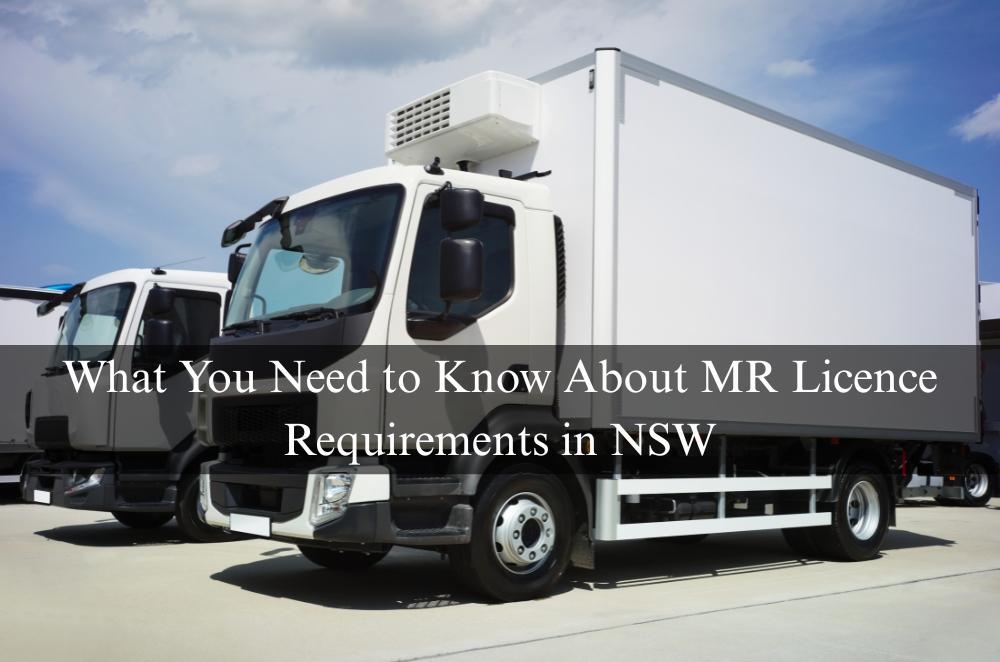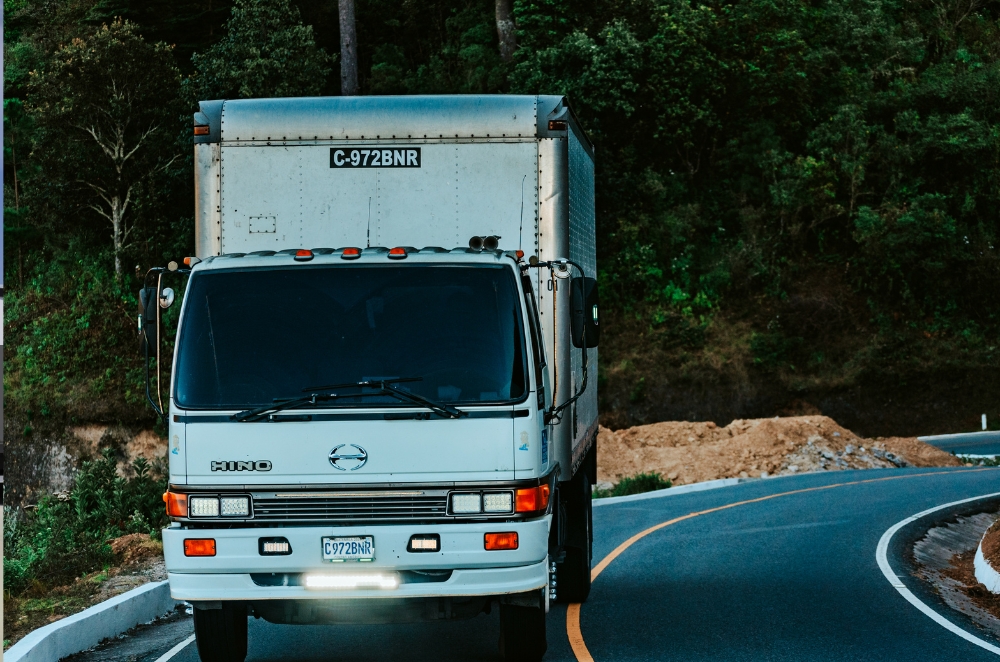What You Need to Know About MR Licence Requirements in NSW

Getting into medium-rigid truck driving doesn’t just happen with a quick decision. It takes a bit of groundwork. A bit of waiting, too. If you’re aiming for a job in logistics, construction, or maybe transporting passengers around, you’ll need to know what the MR licence actually involves. Not just the usual paperwork and passing a test, but real requirements. Legal stuff. Safety rules. And honestly, there are a few steps that tend to trip people up if they’re not paying attention. This isn’t just a quick how-to. It’s what you need to know before you even step foot in the training yard.
What does a Medium Rigid (MR) Licence allow you to drive?
MR licences are specific, and for good reason. You’re operating large, potentially hazardous vehicles on public roads.
Here’s what an MR licence typically allows:
-
Rigid vehicles with two axles and a GVM over 8 tonnes
-
Any bus or truck with more than 8 tonnes GVM but no more than two axles
-
Towing trailers not exceeding 9 tonnes GVM
-
Automatic or synchromesh gearboxes, if tested on one
Keep in mind: vehicles with more axles or articulated steering require different licences altogether.
Who can apply, and what are the eligibility requirements?
Before you can even think about getting an MR licence in NSW, there are a few boxes you’ve got to tick. Not just red tape — it’s there to make sure anyone behind the wheel can actually handle the vehicle safely.
You must:
-
Be at least 19 years old
-
Have held a Class C licence for at least 12 months
-
Pass an eyesight test
-
Complete the knowledge test for the MR class
-
Provide proof of identity and NSW residency
There’s also a practical component. Applicants must complete a competency-based assessment or a driving test through a Roads and Maritime-approved training provider.
The official checklist to apply for a heavy vehicle licence is well worth reviewing before making any bookings — missing a document can delay things significantly.
Choosing the right training provider
Let’s be honest — all training providers are not created equal. The trainer you choose can have a major impact on how well you grasp MR licence requirements, not just technically but in terms of confidence behind the wheel.
Look for a trainer who:
-
Offers both automatic and manual gearbox training
-
Provides one-on-one instruction where possible
-
Has updated and road-compliant training vehicles
-
Can deliver structured modules and feedback loops
When comparing schools, don’t just go by price. Ask how many students pass on their first attempt. That’s usually a good indicator of quality.
Many training providers also offer a truck driver's licence guide, which is a great way to brush up on vehicle checks, road hazard identification, and route planning.
The testing process: what to expect
Getting an MR licence isn’t just about turning up on the day. The testing process is detailed, covering both theoretical knowledge and practical skills.
You’ll need to pass:
-
Knowledge Test: Multiple-choice questions based on the NSW Heavy Vehicle Handbook
-
Eyesight Test: Conducted at the Service NSW centre
-
Driving Test or Competency-Based Assessment (CBA): Includes load restraint, reversing, gear use, and hazard awareness
The CBA option is popular because it allows training and assessment to be bundled together over time, rather than doing all tests on one day.
Most people who pass on their first attempt report that they practised in real road conditions, with an instructor who mimicked the test format. That kind of familiarity reduces nerves, especially in the tight manoeuvring parts of the test.
Why MR training isn’t one-size-fits-all
Everyone comes into MR training with different levels of experience. Some people have been driving vans or small trucks for years. Others are jumping from a car straight into a heavy, rigid vehicle.
Trainers who understand this difference often structure their sessions to meet students where they are. They focus on:
-
Real-world driving practice, not just passing a test
-
Fine-tuning gear shifting (especially in manuals)
-
Safe cornering and reversing in tight spaces
It’s not unusual to need a few extra hours behind the wheel before going for the test — and that’s okay. It’s better to be over-prepared than under-ready, particularly in a vehicle that weighs more than a small house.
Real talk: what it’s actually like to train for your MR licence
A colleague once told me about their first MR session. “I thought I was ready,” they said. “I wasn’t.” They stalled twice, couldn’t get the hang of the mirrors, and clipped a kerb while turning. But after four lessons and some candid feedback, they passed their test — and now drive buses for a living.
That’s the thing with MR training. It’s not just technique, it’s mindset. You need to stay calm, absorb corrections, and unlearn a few habits from driving cars.
If you're worried about confidence, ask your trainer to run mock assessments or help you with pre-trip checks repeatedly until it feels automatic.
Post-licence expectations: what happens next?
Once you’ve got your MR licence, the possibilities open up — but the learning doesn’t stop.
You’ll need to stay across:
-
Vehicle maintenance protocols (e.g. brake checks, tyre pressure)
-
Loading regulations and signage
-
Fatigue management rules
-
Safe reversing practices
Many new MR drivers also go on to explore bus driving, courier work, or moving into heavy rigid (HR) licences later on.
For those exploring careers, there are excellent public breakdowns on how to get your MR licence in NSW that discuss timeframes, average costs, and typical job placements post-certification.
Common mistakes to avoid
Through talking with MR drivers and trainers, here are some avoidable traps:
-
Skimming the handbook — This will show in your knowledge test
-
Booking a test before you're ready — Rushing it just costs more later
-
Choosing the most affordable provider — Low cost doesn’t equal high quality
-
Not preparing for weather or route variables on test day
Proper training isn’t just ticking boxes or sitting through a class.
Final thoughts
A medium rigid licence isn’t just another box to tick — it’s a gateway into a field that’s steady, in-demand, and often underappreciated. If you’ve ever considered stepping into the logistics industry or taking control of your career path, the MR licence is a worthy place to start.
Training properly means more than just checklists. It means knowing how to respond under pressure, understanding what the road throws at you, and putting in the hours, not just to pass, but to drive well, long-term.
- Information Technology
- Office Equipment and Supplies
- Cars and Trucks
- Persons
- Books and Authors
- Tutorials
- Art
- Causes
- Crafts
- Dance
- Drinks
- Film
- Fitness
- Food
- Games
- Gardening
- Health
- Home
- Literature
- Music
- Networking
- Other
- Party
- Religion
- Shopping
- Sports
- Theater
- Wellness



